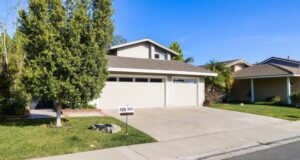Pre-Foreclosure Sales (Short Sales) Jump 19 Percent From Q1, REO Sales Flat
Average Time to Sell Pre-Foreclosures Down, Average Time to Sell REOs Increases
IRVINE, CA – August 25, 2011 – (RealEstateRama) — RealtyTrac® (realtytrac.com), the leading online marketplace for foreclosure homes, today released its Q2 2011 U.S. Foreclosure Sales Report™, which shows that sales of homes that were in some stage of foreclosure or bank owned accounted for 31 percent of all U.S. residential sales in the second quarter of 2011, down from nearly 36 percent of all sales in the first quarter but up from 24 percent of all sales in the second quarter of 2010.
Despite the increase in share of total sales from a year ago, sales of real estate in some stage of foreclosure (NOD, LIS, NTS, NFS) or bank-owned (REO) decreased from a year ago in terms of raw numbers. Third parties purchased a total of 265,087 homes in foreclosure or bank owned nationwide in the second quarter, up 6 percent from a revised first quarter total but still down 11 percent from the second quarter of 2010.
The average sales price of homes in foreclosure or bank owned was $164,217 in the second quarter, down less than 1 percent from the first quarter and down nearly 5 percent from the second quarter of 2010. The average sales price for homes in foreclosure or bank owned was 32 percent below the average sales price of homes not in foreclosure.
“With average prices on distressed real estate trending down and average discounts trending up, this report is clearly good news for well-positioned buyers and investors looking for bargain real estate that will build them wealth in the long term and often cash flow as rental real estate in the short term,” said James Saccacio chief executive officer of RealtyTrac. “Maybe less evident, however, is the good news in this report for distressed homeowners looking to sell, and even lenders saddled with large portfolios of delinquent loans.
“The jump in pre-foreclosure sales volume coupled with bigger discounts on pre-foreclosures and a shorter average time to sell pre-foreclosures all point to a housing market that is starting to focus on more efficiently clearing distressed inventory through more streamlined short sales — at least in some areas,” Saccacio continued. “This gives distressed homeowners who do not qualify for loan modification or refinancing — or who are not interested in those options and want to sell — a better chance of completing a short sale to avoid foreclosure. Streamlined short sales also give lenders the opportunity to more pre-emptively purge non-performing loans from their portfolios and avoid the long, costly and increasingly messy process of foreclosure and the subsequent sale of an REO — which may end up selling for a lower price than it would have as a pre-foreclosure short sale and in the meantime further stresses already overloaded REO departments.”
Pre-foreclosure sales jump 19 percent, bank-owned sales flat
A total of 102,407 pre-foreclosure homes — in default or scheduled for auction — sold to third parties in the second quarter, an increase of 19 percent from the previous quarter but still down 12 percent from the second quarter of 2010. Pre-foreclosure sales accounted for 12 percent of all sales, the same percentage as in the first quarter but up from 10 percent of all sales in the second quarter of 2010.
Some of the states with the biggest quarterly increases in pre-foreclosure home sales included Nevada with a 43 percent increase, Washington with a 39 percent increase, California with a 38 percent increase, and Texas with a 34 percent increase.
Pre-foreclosures, which are often sold via short sale, had an average sales price nationwide of $192,129, a discount of 21 percent below the average sales price of non-foreclosure homes. That discount was up from a 17 percent discount in the previous quarter and a 14 percent discount in the second quarter of 2010. Pre-foreclosures sold in the second quarter took an average of 245 days to sell after receiving the initial foreclosure notice, down from an average of 256 days in the first quarter — following three straight quarters of increases in the average time to sell pre-foreclosures.
A total of 162,680 bank-owned (REO) homes sold to third parties in the second quarter, virtually unchanged from the 162,900 in the first quarter and down 10 percent from the second quarter of 2010. REO sales accounted for 19 percent of all sales in the second quarter, down from 23 percent of all sales in the first quarter but up from 15 percent of all sales in the second quarter of 2010.
Nationally, REOs had an average sales price of $145,211, a discount of nearly 40 percent below the average sales price of non-foreclosure homes. This is an increase from a 36 percent discount in the previous quarter and a 34 percent discount in the second quarter of 2010. REOs that sold in the second quarter took an average of 178 days to sell after being foreclosed on, up from 176 days in the first quarter and up from 164 days in the second quarter of 2010.
Nevada, Arizona, California post highest percentage of foreclosure sales
Foreclosure-related sales accounted for 65 percent of all residential sales in Nevada during the second quarter, the highest percentage of any state. Third parties purchased a total of 15,685 homes in foreclosure or bank owned in Nevada during the second quarter, up 24 percent from the first quarter and up 31 percent from the second quarter of 2010.
Arizona foreclosure-related sales also increased on a quarterly and annual basis, accounting for 57 percent of all sales in the state during the second quarter — the second highest percentage of any state.
Third parties purchased a total of 69,897 homes in foreclosure or bank owned in California during the second quarter, 51 percent of all sales in the state. Foreclosure-related sales in California increased 12 percent from the first quarter but were virtually unchanged from the second quarter of 2010.
Michigan foreclosure-related sales accounted for 41 percent of all sales in the state during the second quarter, the fourth highest percentage among the states, and Georgia foreclosure-related sales accounted for 38 percent of all sales in the state during the second quarter, the fifth highest percentage.
Other states where foreclosure-related sales accounted for at least 30 percent of all sales were Colorado (36 percent), Florida (35 percent), Illinois (34 percent), Oregon (33 percent), and Idaho (30 percent).
Metros with biggest foreclosure discounts
Among metropolitan statistical areas with at least 100 foreclosure-related sales during the second quarter, the Louisville, Ky., metro area posted the biggest foreclosure discount. Third parties purchased a total of 527 homes in foreclosure or bank owned in the metro area during the quarter at an average sales price of $85,211 — 54 percent below the average sales price of non-foreclosure homes.
The Sebastian-Vero Beach metro area in Florida documented an average foreclosure-related sales price of $97,175, a 53 percent discount, and the Saginaw, Mich., metro area documented an average foreclosure-related sales price of $48,977, also a 53 percent discount.
Other metro areas with a foreclosure discount of 50 percent or more were Milwaukee (51 percent), Pittsburgh (51 percent), and Kalamazoo, Mich. (50 percent).
Report methodology
The RealtyTrac U.S. Foreclosure Sales Report is produced by matching national address-level sales deed data against RealtyTrac’s foreclosure database of pre-foreclosure (NOD, LIS), auction (NTS, NFS) and bank-owned (REO) properties. A property is considered a foreclosure sale if a sales deed is recorded for the property while it was actively in some stage of foreclosure or bank-owned. The foreclosure discount is calculated by comparing the percentage difference between the average sales price of properties not in foreclosure to the average sales price of properties in some stage of foreclosure or bank-owned. States without sufficient foreclosure sales data to calculate average prices are not included in the report.
Glossary of Terms
Foreclosure (FC) sale: a sale of a property that occurs while the property is actively in some stage of foreclosure (NOD, LIS, NTS, NFS or REO). This includes only sales to third-party buyers or investors not involved in the foreclosure process. It does not include property transfers from the owner in default to the foreclosing bank or lender.
REO sale: a sale of a property that occurs while the property is actively bank owned (REO).
Pre-foreclosure sale: a sale of a property that occurs while the property is actively in default (NOD, LIS) or scheduled for foreclosure auction (NTS, NFS).
Pct. of all sales: total number of Foreclosure Sales (or Pre-Foreclosure Sales or REO Sales) as a percentage of all residential sales during the quarter or year.
Avg. FC sales price: the average sales price of Foreclosure Sales (or Pre-Foreclosure Sales or REO Sales) during the quarter or year, excluding sales with no sales price.
Avg. FC discount: the percentage difference between the average sales price of foreclosure sales and the average sales price of non-foreclosure sales during the quarter or year.
Avg. REO discount: the percentage difference between the average sales price of REO sales and the average sales price of non-foreclosure sales during the quarter or year.
Avg. pre-foreclosure discount: the percentage difference between the average sales price of pre-foreclosure sales and the average sales price of non-foreclosure sales during the quarter or year.
Foreclosure Sales Percent of All Sales – Top 10 States
| Q2 2011 Total Foreclosure (FC) Sales | ||||||||
Report License
The RealtyTrac U.S. Foreclosure Sales Report is the result of a proprietary evaluation of information compiled by RealtyTrac; the report and any of the information in whole or in part can only be quoted, copied, published, re-published, distributed and/or re-distributed or used in any manner if the user specifically references RealtyTrac as the source for said report and/or any of the information set forth within the report.
About RealtyTrac Inc.
RealtyTrac (http://www.realtytrac.com/) is the leading online marketplace of foreclosure properties, with more than 1.5 million default, auction and bank-owned listings from over 2,200 U.S. counties, along with detailed property, loan and home sales data. Hosting more than 3 million unique monthly visitors, RealtyTrac provides innovative technology solutions and practical education resources to facilitate buying, selling and investing in real estate. RealtyTrac’s foreclosure data has also been used by the Federal Reserve, FBI, U.S. Senate Joint Economic Committee and Banking Committee, U.S. Treasury Department, and numerous state housing and banking departments to help evaluate foreclosure trends and address policy issues related to foreclosures.
###
Media Contacts:
Christine Stricker
949.502.8300, ext. 268
">
Michelle Schneider
949.502.8300, ext. 139
">
Historical & Detailed Data:
Tyler White
949.502.8300, ext. 115
">











